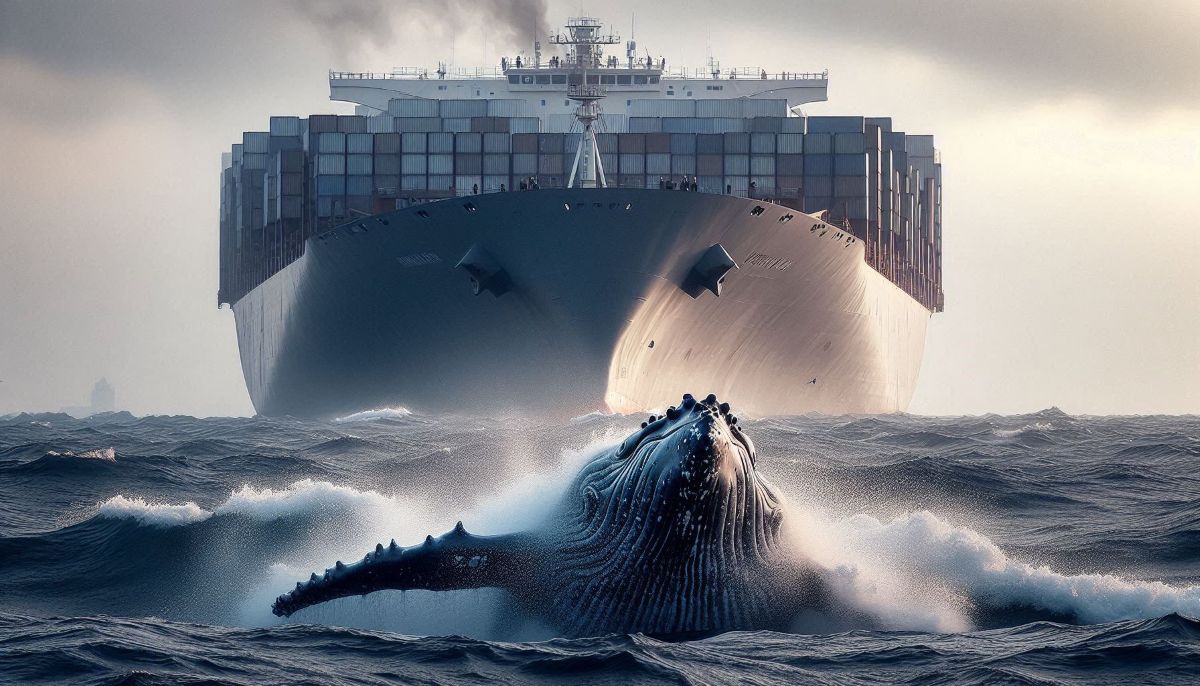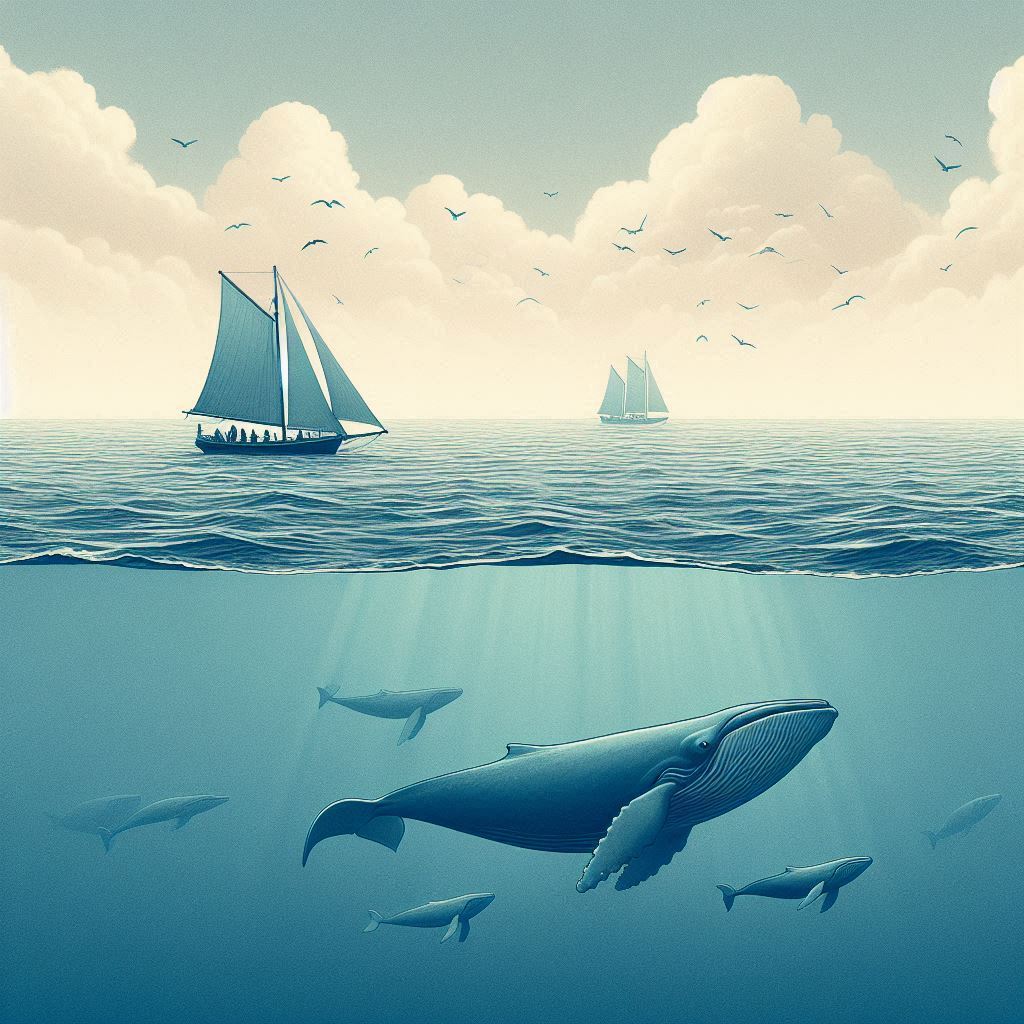
Watch short for this article (5 slides)
Navigating Shared Waters: The Escalating Threat of Whale-Vessel Collisions and Strategies for Coexistence
The vast expanse of the ocean is a realm of constant movement, hosting both the migrations of majestic whales and the ever-increasing traffic of human vessels. When these paths intersect, the consequences can be devastating. Incidents like the recent injury to a humpback whale calf after a suspected boat strike off Western Australia bring momentary, sharp focus to a persistent and growing global problem: whale-vessel collisions, often termed "vessel strikes." These encounters pose a significant threat to whale populations, particularly endangered species, and can also endanger mariners and damage vessels. Understanding the complex factors driving this increase, the limitations of current preventative measures, and the crucial need for innovative, multi-faceted solutions is paramount for fostering safer coexistence in our increasingly busy oceans.

Defining the Threat: What Constitutes a Vessel Strike?
A vessel strike refers to any physical impact between any type of watercraft (from small recreational boats to massive container ships) and a live marine mammal. While this article focuses on whales, dolphins and porpoises are also vulnerable. Impacts can range from glancing blows to severe collisions resulting in:
- Blunt Force Trauma: Leading to internal injuries, broken bones, and often death, even without visible external wounds.
- Propeller Wounds: Deep cuts and lacerations from propellers, often leading to severe injury, infection, and mortality.
- Non-lethal Injuries: While not immediately fatal, injuries can impair a whale's ability to feed, navigate, reproduce, or avoid other threats, potentially leading to death later.
Identifying strikes can be challenging, as many injured or killed whales sink or drift undetected. Evidence often comes from stranded carcasses bearing signs of trauma or reports from vessel operators and observers.
Why the Alarming Increase? Driving Factors Behind Whale-Vessel Collisions
Several interconnected factors contribute to the rising frequency of vessel strikes:
- Expanding Human Maritime Footprint:
- Increased Vessel Traffic Volume: Global shipping continues to grow, increasing the sheer number of vessels transiting whale habitats and migration routes.
- Faster Vessel Speeds: Modern ships often travel at higher speeds (15-25+ knots), reducing the time available for both whales and mariners to detect and avoid each other. Higher speeds also dramatically increase the severity of impact if a collision occurs.
- Coastal Development & Recreation: Increased recreational boating, whale watching tours, and coastal infrastructure development concentrate vessel activity closer to shore, often overlapping with critical whale feeding and breeding areas.
- Shifting Whale Distribution and Behavior (Climate Change Impacts):
- Changing Prey Availability: Warming ocean temperatures and altered currents are shifting the distribution of krill, fish, and other whale prey. Whales follow their food sources, potentially moving into areas with higher vessel traffic or unfamiliar waters where risks are less understood.
- Habitat Exploration: As conditions change, whales might explore new habitats or utilize existing ones differently, increasing encounter possibilities. For example, melting Arctic sea ice opens new shipping routes through previously inaccessible whale habitats.
- Inherent Difficulties in Detection:
- Whale Behavior: Whales spend the vast majority of their time underwater. Surface intervals for breathing can be brief and unpredictable. Some species engage in behaviors like resting near the surface (logging) or feeding at depth, making them difficult to spot. Calves are often less aware and more vulnerable.
- Vessel Limitations: Large ships have limited maneuverability and long stopping distances. Vessel noise can sometimes mask the sound of an approaching whale (or vice versa), and bridge watch officers may have limited visibility directly in front of the bow.
- Environmental Conditions: Darkness, fog, high sea states (waves), and glare significantly reduce the ability of vessel crews to spot whales visually.
- Lack of Awareness or Compliance: Some vessel operators may be unaware of the risks, lack knowledge of safe operating procedures around whales, or fail to comply with existing speed restrictions or avoidance guidelines.
Species at Risk: Vulnerability Varies
While all whales are potentially vulnerable, some species are disproportionately affected due to their habitats, behavior, or conservation status:
- North Atlantic Right Whales (NARW): Critically endangered, these slow-moving whales inhabit coastal waters along the busy eastern seaboard of North America, making them exceptionally vulnerable. Vessel strikes are a leading cause of NARW mortality. (NOAA Fisheries - NARW Information)
- Blue Whales, Fin Whales, Humpback Whales: Large whales that migrate long distances, often crossing major shipping lanes. Their size does not prevent lethal injury from large vessels.
- Gray Whales: Undertake long coastal migrations, bringing them close to shore and vessel traffic along the Pacific coast of North America.
Strategies for Prevention: A Multi-Layered Approach
No single solution exists; effective prevention requires combining various strategies:
1. Operational Measures: Modifying Vessel Behavior
- Mandatory and Voluntary Speed Restrictions: This is widely considered the **single most effective measure** for reducing the lethality of vessel strikes. Slower speeds (typically **10 knots or less**) provide more time for detection and maneuvering by both whales and vessels, and significantly reduce the force of impact if a collision occurs.
- Seasonal Management Areas (SMAs): Designated zones with mandatory speed limits during specific times when whales are known to aggregate (e.g., calving or feeding grounds). Example: NOAA implements SMAs for North Atlantic right whales along the U.S. East Coast.
- Dynamic Management Areas (DMAs): Temporary, voluntary speed reduction zones triggered by recent whale sightings in a specific area.
- Challenges: Enforcement, particularly for voluntary measures or in international waters, remains difficult. Economic pressures on shipping can create resistance to speed reductions.
- Routing Measures and Areas To Be Avoided (ATBAs): Adjusting shipping lanes or establishing ATBAs to divert traffic away from known critical whale habitats or high concentrations of whales. The International Maritime Organization (IMO) has adopted several such measures globally.
- Enhanced Lookouts: Utilizing dedicated, trained marine mammal observers (MMOs) on vessels can increase detection rates, although effectiveness is limited by environmental conditions (visibility, sea state) and observer fatigue.
2. Technological Solutions: Seeing and Hearing the Unseen

- Passive Acoustic Monitoring (PAM): Using underwater microphones (hydrophones) on fixed buoys, autonomous gliders, or towed arrays to detect whale vocalizations in real-time or near real-time. Data can trigger alerts to nearby vessels.
- Pros: Can detect whales underwater, day or night, in various weather conditions.
- Cons: Only detects vocalizing whales; effectiveness reduced by background ocean noise (including vessel noise); requires infrastructure and data analysis systems.
- Thermal (Infrared) Detection: Using specialized cameras to detect the heat signature of whale blows or bodies at the surface.
- Pros: Can work at night and detect non-vocalizing whales.
- Cons: Limited effective range; performance affected by weather (fog, rain) and sea state; distinguishing whales from other objects can be challenging.
- Satellite Tagging and Predictive Modeling: Attaching satellite tags to whales provides data on their movements and habitat use. This data can inform predictive models identifying areas of high strike risk, enabling dynamic management.
- Pros: Provides detailed movement insights.
- Cons: Tagging is invasive and expensive; only a small fraction of any population can be tagged; tag longevity varies.
- Real-Time Alert Systems and Apps: Platforms like the Whale Alert app consolidate data from acoustic detections, visual sightings, and tagged whale movements to provide near real-time warnings to mariners on their mobile devices or navigation systems.
- Pros: Increases situational awareness for subscribed vessels.
- Cons: Relies on data input accuracy and latency; requires mariner uptake and usage.
- Drone Surveillance: Emerging use of drones for localized aerial surveys to spot whales near specific operations or high-risk areas.
3. Education, Training, and Awareness
- Mandatory training modules for ship officers and crews on whale identification, vessel strike risks, reporting protocols, and avoidance maneuvers.
- Outreach programs and guidelines for recreational boaters and whale watching operators (e.g., NOAA's "See A Spout, Watch Out!" campaigns).
The Boater's Role: Best Practices for Safe Navigation
Individual mariners, especially recreational boaters, play a crucial role:
- Be Vigilant: Actively scan for whales (spouts, backs, flukes, splashes). Post dedicated lookouts if possible.
- Slow Down Safely: Reduce speed significantly (ideally 10 knots or less) when in areas known for whale activity, migration corridors, or if whales are sighted.
- Maintain Prescribed Distances: Regulations vary, but general guidelines often recommend staying at least **100 yards/meters** away. For highly endangered species like North Atlantic right whales, the mandatory distance is **500 yards (1500 feet)**. Never intentionally approach whales head-on.
- Report Sightings: Use resources like the Whale Alert app or contact the Coast Guard to report whale sightings, especially large whales or aggregations in shipping lanes.
- Never Assume Predictability: Whales can surface unexpectedly, change direction, or remain submerged for long periods. Do not assume a whale knows you are there or will move out of your way.
Policy, Enforcement, and International Cooperation
Effective vessel strike reduction requires strong policy frameworks and global collaboration:
- National Regulations: Laws like the U.S. Marine Mammal Protection Act (MMPA) and Endangered Species Act (ESA) provide the legal basis for implementing speed restrictions and other protective measures.
- International Bodies: The International Maritime Organization (IMO) adopts ship routing measures and guidelines, while the International Whaling Commission (IWC) conducts research and provides scientific advice on threats including vessel strikes.
- Enforcement is Key: Regulations are only effective if enforced through monitoring (e.g., vessel tracking via Automatic Identification System - AIS), patrols, and meaningful penalties for non-compliance. Consistent funding for monitoring and enforcement programs is crucial.
"Reducing vessel strike risk isn't just about technology or speed limits alone; it requires a culture shift within the maritime community, supported by robust regulations, consistent enforcement, and a shared commitment to protecting these vulnerable marine giants." - Dr. Lisa Chang, Marine Conservation Biologist (adapted perspective).
Conclusion: Charting a Course for Coexistence
Whale-vessel collisions represent a critical conservation challenge at the intersection of human activity and marine ecosystems. Driven by increasing ocean traffic and compounded by climate-induced shifts in whale distribution, the threat demands urgent and comprehensive action. While technological advancements offer promising tools for detection and warning, operational changes like mandatory speed reductions in key areas remain the most proven method for saving whale lives. Ultimately, success hinges on a collaborative global effort involving researchers developing better solutions, international bodies and national governments implementing and enforcing effective policies, maritime industries adopting safer practices, and individual mariners exercising vigilance and responsibility on the water. Protecting whales from vessel strikes is not just an environmental issue; it is a matter of ensuring the safe and sustainable use of our shared marine environment for generations to come.